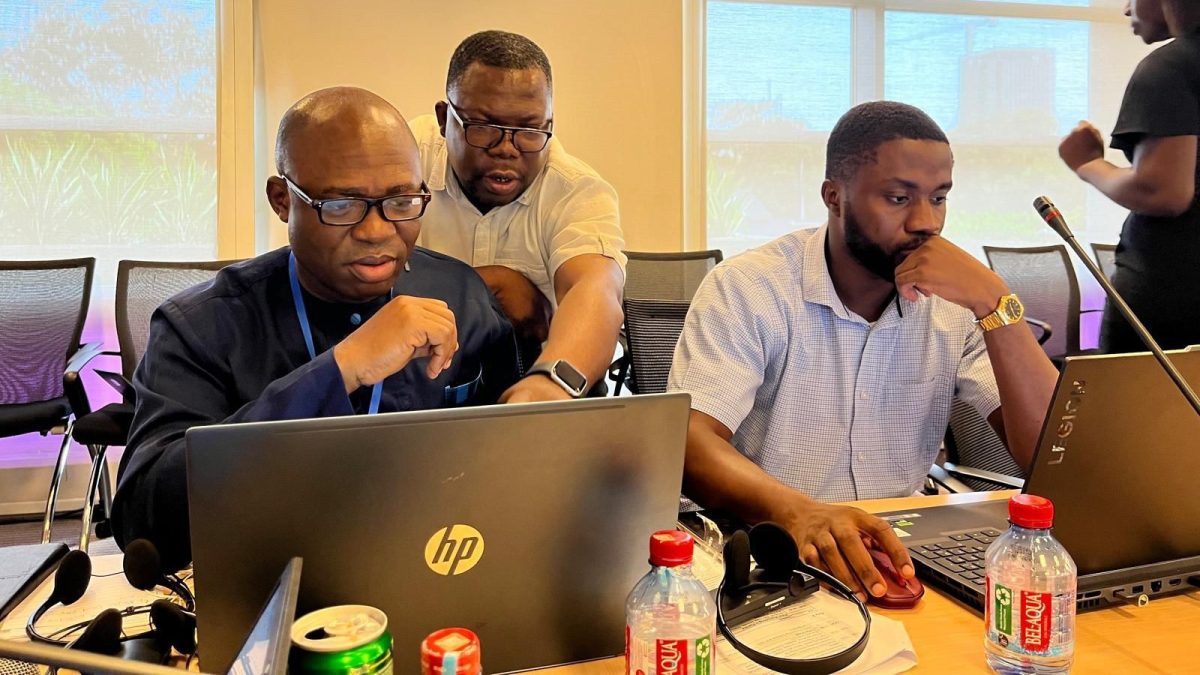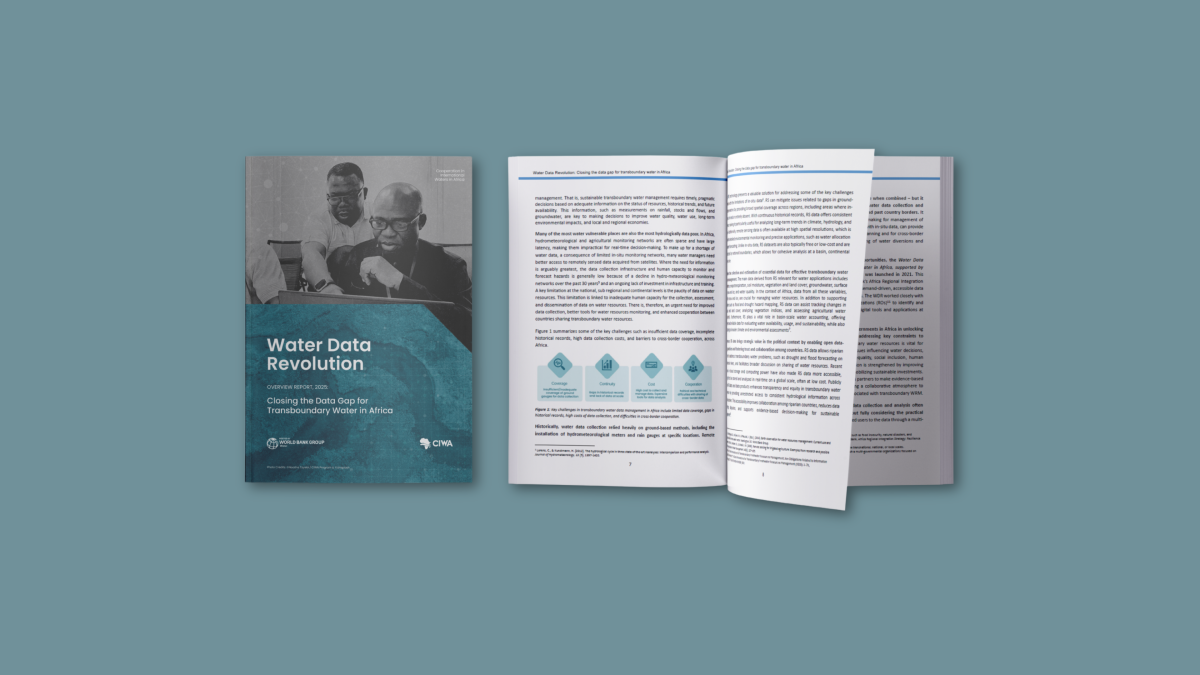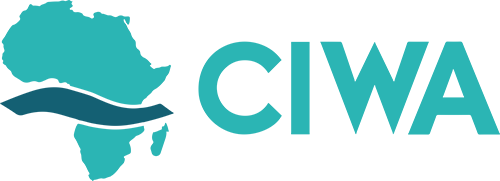The Water Data Revolution: Transforming Transboundary Water Management in Africa
Posted in : Blog on 3 June 2025

Participants at the water accounting workshop in Accra, Ghana, May 2024. ©Noosha Tayebi / World Bank.
With 90 percent of water spanning 63 transboundary river basins in Sub-Saharan Africa, fueling cooperation rather than competition is essential for better management of the continent’s shared water resources. “Countries are waking up, trying to secure water security before it’s too late,” says Dr. Rafatou Fofana, Director of the Volta Basin Authority. “Managing a shared vision for how water is used…is critical” for sustainable development.”
Achieving that vision requires the right instruments to help countries assess how resources are being used and identify improvements to drive more equitable and effective regional development.
With extreme weather patterns, surging populations, and economic growth compounding water stress, the need for cooperative, data-driven water management has never been more urgent. Yet many of Africa’s most water-vulnerable areas are also the most data-poor.
Countries often don’t have enough accurate, timely, and comprehensive information about their water resources or rainfall patterns—such as how much water they have or how it’s being used. Without robust data, decision makers cannot plan effectively; allocate resources efficiently; respond to emerging risks such as droughts, floods, and groundwater depletion; optimize infrastructure investments; or implement policies that ensure the long-term sustainability of this critical resource.
As former United Nations Secretary General Kofi Annan said, “Without good data, we’re flying blind. If you can’t see it, you can’t solve it.”
That’s why the World Bank’s Cooperation in International Waters in Africa (CIWA) program launched the Water Data Revolution initiative in 2021. The new report, “Water Data Revolution: Closing the Data Gap for Transboundary Water in Africa,” shows how the initiative has filled the information gap by empowering regional and river basin organizations with the tools, data, and capacity to make informed, collaborative decisions about shared resources.

The CIWA Water Data Revolution Assessment Report is available in flip book format.
Transforming water data through remote sensing
Traditional approaches to collecting water data depend on ground-based methods such as rain gauges and weather and river flow meters. But the quality of monitoring networks has declined, and investment in infrastructure and training has been insufficient.
Remote sensing technologies have emerged as powerful tools to address these challenges. By providing broad spatial coverage, long-term historical data, and real-time monitoring capabilities, remote sensing enables water managers to visualize and analyze data even in regions with limited or no ground-based infrastructure. Advantages include broad spatial coverage across regions, continuous historical records for analyzing long-term trends, high spatial resolution for detailed environmental monitoring, cost-effective data collection that transcends national boundaries, and real-time monitoring through cloud storage and computing.
Perhaps most significantly, by enabling open data-sharing practices, remote sensing platforms foster trust and collaboration among countries. This transparency is crucial for transboundary water governance, reducing potential conflicts and promoting equitable resource distribution. Water Data Revolution also has:
- Empowered decision makers with real-time, accurate data
- Built sustainable institutional capacity for long-term resource management
- Created cost-effective solutions for monitoring water resources
River basin organizations reported significantly improved technical capacity, stronger ownership of data tools, and enhanced regional collaboration. “I would like to thank the World Bank for providing trainings and helping us learn to manipulate these tools…to understand the availability of this resource,” says Volta Basin Authority Executive Director Robert Dessouassi. “This tool will help us …better understand how things happen,” underscoring the need not just for data, but also for the skills and systems to turn it into action.
The Water Data Revolution approach
The program, which ended in December 2024, was structured around three pillars:
- Assessment and Needs Identification: The program first evaluated the data needs, status, and capabilities of 15 river basin organizations and three regional organizations across 37 countries, identifying critical gaps in data access, technical capacity, and analytical tools.
- Capacity Building: The initiative enabled organizations to collect, manage, and analyze remote sensing data through workshops and training sessions focused on real-world transboundary water planning challenges. To ensure long-term sustainability, the program used a “training of trainers” model—equipping staff to share their knowledge and embed these capabilities within each organization.
- Innovation and Implementation: The program developed and piloted innovative, demand-driven tools using public domain data and scalable technology. One key output was the creation of water accounting (WA) dashboards for three pilot river basin organizations: the Volta Basin Authority, Incomati and Maputo Watercourse Commission, and Zambezi Watercourse Commission.
The WA dashboards enable transparent, standardized assessments of water use and availability at different geographical scales—foundational for sustainable transboundary water management. Built on the WA+ methodology developed by the International Water Management Institute, the dashboards are powered entirely by satellite-derived, public domain data. This ensures open access, reduces costs, and sidesteps the political and logistical complexities of sharing in situ data across borders, promoting transparency and trust—critical ingredients for regional cooperation.
Scaling up innovative solutions
Water Data Revolution has laid the groundwork for African nations to collaboratively manage their shared water resources based on accurate, real-time data. By demonstrating success at a smaller scale, the program set the foundation for broader adoption, ensuring that more countries and institutions can leverage cutting-edge technologies to improve water governance. As this data revolution unfolds, it offers hope for more effective, equitable, and scalable water management across Africa’s transboundary water systems.


